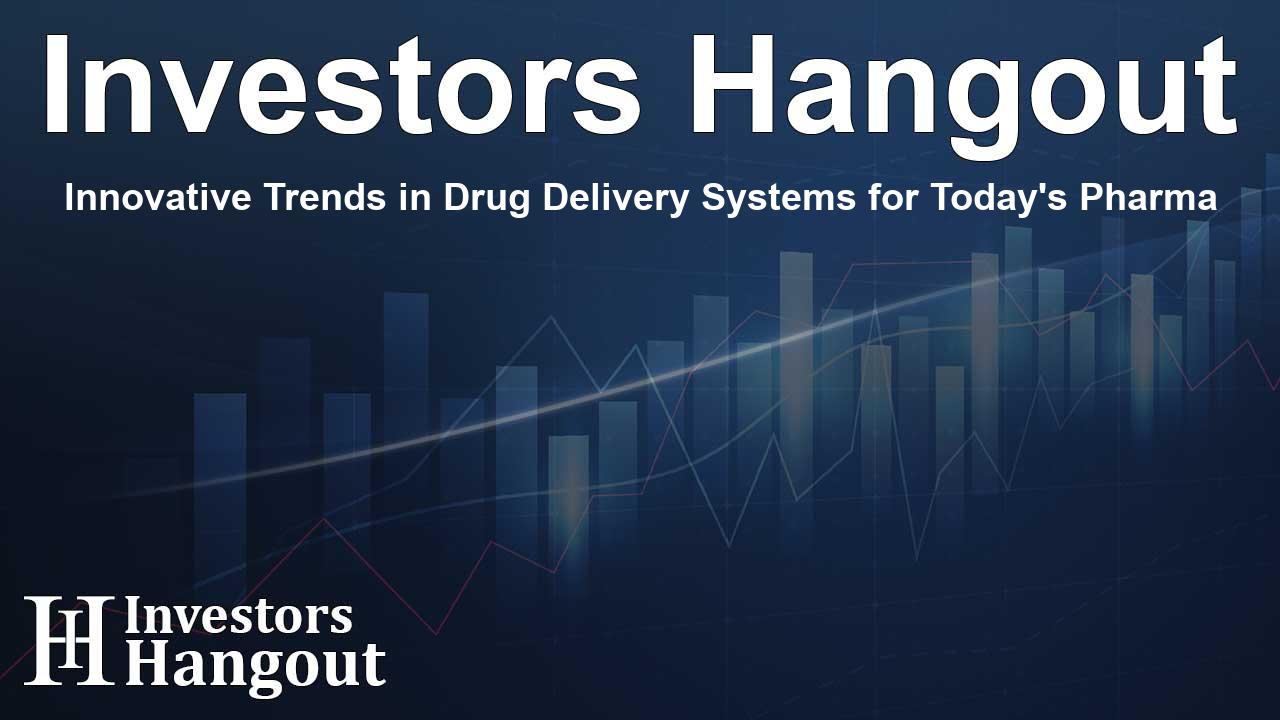Innovative Trends in Drug Delivery Systems for Today's Pharma

Transforming Drug Delivery Systems: A New Era in Pharma
The field of drug delivery systems (DDS) is undergoing a significant transformation, driven by evolving demands from the pharmaceutical industry. Recent insights indicate that several key trends are shaping how drugs are delivered to patients, enhancing outcomes across various therapeutic areas.
Key Drivers of Change in DDS
Understanding the factors influencing the evolution of drug delivery systems is crucial. Current trends reveal that the integration of digital technology, a commitment to sustainability, and a focus on patient-centric designs are at the forefront of this transformation.
Digital Transformation in Drug Delivery
Among the leading changes, digital technology is becoming an integral part of drug delivery systems. Companies are now co-developing devices with input from patients to ensure higher usability and improved adherence tracking. This means that medications for chronic diseases like diabetes and innovative therapies such as GLP-1 are becoming more accessible and easier to manage. Moreover, the creation of real-world evidence through digital means is significantly aiding in understanding treatment efficacy.
Sustainability and Environmental Responsibility
As the world shifts towards greener practices, sustainability has emerged as a crucial element in the pharmaceutical sector. Drug delivery systems are now incorporating eco-friendly initiatives, such as reusable injectors and environmentally friendly packaging designs. The industry is aligning itself with local and international regulations on packaging waste, emphasizing sustainability in partnerships and procurement processes.
The Rise of Large-Volume Subcutaneous Delivery
Another pivotal trend influencing drug delivery is the growing demand for large-volume subcutaneous delivery systems. Driven by the rapid expansion of the biologics market, which has seen substantial growth in recent times, this method is now vital for the distribution of many biologic treatments and therapies. With a significant percentage of clinical-stage biologics requiring substantial volumes, the systems designed for these applications are increasingly in demand.
Efficiency with Off-the-Shelf Solutions
Pharmaceutical companies are increasingly opting for pre-validated, off-the-shelf autoinjector systems instead of developing custom solutions. This shift not only reduces development expenses but also cuts down on the time needed to bring products to market while minimizing regulatory risks. Such platforms are particularly prevalent in the GLP-1 therapy sector, where a significant majority of products utilize these efficient delivery systems.
Strengthening Partnerships within the Industry
Collaboration between biopharma companies and contract development and manufacturing organizations (CDMOs) is becoming a standard practice. These partnerships aim to enhance the drug-device continuum by providing comprehensive support throughout the development process. By investing in advanced automation and digital manufacturing, CDMOs are not only improving efficiency but also boosting scalability and market readiness.
Insights from Industry Leaders
Industry leaders emphasize that modern drug delivery innovation encompasses more than just creating devices. It entails a holistic approach integrating digital capabilities, patient-centered design, and sustainable manufacturing practices. By keeping pace with these trends, companies within the pharmaceutical sector can better navigate the rapidly changing ecosystem, fostering better patient access and improved health outcomes.
Conclusion: Navigating a Dynamic Landscape
The ongoing changes in the drug delivery systems market signify a new chapter in pharmaceutical delivery methods. The trends highlighted in recent reports underscore the importance of evolving alongside technological advancements and patient needs. This transformation is set to enhance not only how drugs are delivered but also the overall effectiveness of treatment strategies, paving the way for a healthier future.
Frequently Asked Questions
What are the current trends in drug delivery systems?
Key trends include digital integration, sustainability, patient-centric designs, and the rising demand for large-volume subcutaneous delivery.
How are pharmaceutical companies adapting to these trends?
Companies are collaborating with CDMOs, focusing on pre-validated platforms, and embedding digital features into their devices to improve patient adherence.
Why is sustainability important in drug delivery?
Sustainability is crucial as the industry shifts toward eco-friendly practices, which help comply with regulations and align with consumer demand for greener solutions.
What role does digital technology play in drug delivery?
Digital technology enhances usability, enables real-world evidence generation, and augments adherence tracking, making treatments more effective.
How does large-volume subcutaneous delivery impact the market?
This method is crucial for the biologics sector, responding to a significant rise in the demand for therapies requiring larger volumes for administration.
About The Author
Contact Dylan Bailey privately here. Or send an email with ATTN: Dylan Bailey as the subject to contact@investorshangout.com.
About Investors Hangout
Investors Hangout is a leading online stock forum for financial discussion and learning, offering a wide range of free tools and resources. It draws in traders of all levels, who exchange market knowledge, investigate trading tactics, and keep an eye on industry developments in real time. Featuring financial articles, stock message boards, quotes, charts, company profiles, and live news updates. Through cooperative learning and a wealth of informational resources, it helps users from novices creating their first portfolios to experts honing their techniques. Join Investors Hangout today: https://investorshangout.com/
The content of this article is based on factual, publicly available information and does not represent legal, financial, or investment advice. Investors Hangout does not offer financial advice, and the author is not a licensed financial advisor. Consult a qualified advisor before making any financial or investment decisions based on this article. This article should not be considered advice to purchase, sell, or hold any securities or other investments. If any of the material provided here is inaccurate, please contact us for corrections.
